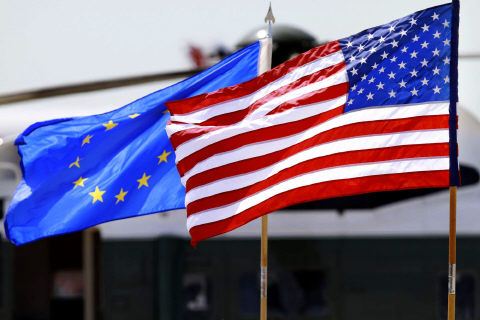Megan Elise Griffith
J.D., Columbia Law School, 2016
For newcomers to any country, mundane issues, such as obtaining a new driver’s license, can become a time drain. Immigrants may find that they only need to bring documents to a local agency to exchange their “old” license for a new one. Unlucky immigrants, however, may need to take written and practical tests, or even fulfill a classroom requirement, to obtain the new host country license. The fundamental freedom of movement and mutual recognition have mitigated this issue for individuals moving between EU member states. However, member states’ regulations still vary considerably in terms of how long non-EU newcomers may use the old license and what tests they must take to obtain the new ones. In light of Directive 2006/126/EC, the EU should address non-EU licenses.
Exchanging one’s driver’s license within the EU is relatively straightforward. Directive 2006/126/EC harmonized the minimum qualifications for and the look of a driver’s license across EU member states. In addition, member states of the European Union and the European Economic Area must recognize the validity of each other’s licenses and be willing to exchange them. This is true even if the immigrant would not initially have qualified for a license in the host country because of the principle of mutual recognition.[1]
Third-country nationals face more barriers upon moving to the EU. The Vienna Convention on Road Traffic governs the validity of foreign driver’s licenses during non-permanent stays in a foreign country, so long as certain translation steps are taken. However, the Convention does not force signatories to exchange foreign driver’s license for new ones. Directive 2006/126/EC requires that member states document when they exchange third-country licenses for an EU license, but it remains silent as to when a third-country license qualifies for an exchange.
Instead, each member state determines which third-country licenses it is willing to exchange. This is dependent almost entirely on reciprocity agreements, leading to a variety of possibilities in the EU. Some countries, like Malta and Sweden, offer mutual recognition for only one or two third countries. For example, Malta only exchanges Australian driver’s licenses, while Sweden exchanges only those from Japan and Switzerland. On the other end of the spectrum lie Germany and France, who have mutual-recognition agreements with many, but not all third countries. Germany recognizes licenses from many non-EU countries and from 39 of the United States, while France exchanges licenses from 18 of the United States and from other countries like Chad and Sudan.
Because member states already must honor licenses issued elsewhere in the EU, this leaves a gap: Third-country nationals who immigrate to the EU through the “right” member state can easily exchange their license, while those who first move to a member state without a reciprocity agreement have a much higher burden to get an EU driver’s license. Coordinating the mutual recognition system on a Union level would help to narrow the gap for third-country nationals. The existing Union harmonization for EU licenses supports this coordination. Driver’s licenses occupy a special area of administrative law in the European structure. The minimum requirements are harmonized at the Union level, while the member states issue, suspend, and cancel licenses.[2]
While the Union’s minimum requirements find backing in scientific and pedagogical data, the reciprocity agreements with third countries show almost no correlation with similarities in driving rules. For example, in Europe, one must yield to the right even where there is no stop sign,[3] while in the United States, a lack of stop sign implies that a driver has the right of way. The importance of the trade relationship also seems to bear very little on the decision: Both Germany and France omit New York from their lists of reciprocal agreements. Instead, recognition depends primarily on reciprocity agreements between member states and third countries. European countries negotiate for reciprocity with U.S. states individually because U.S. driver’s licenses are handled exclusively on the state level; the State Department may only encourage but not require states to reach these agreements.
Thus, three key benefits would accrue from coordinating reciprocal agreements at the Union level. First, the additional bargaining power from negotiating as a bloc may spur acceptance of EU licenses in more third countries.[4] Second, less time would be spent overall on additional written and practical tests, allowing for easier expatriation and repatriation between EU member states and third countries. Third, centralized coordination could allow for comparing EU and third-country driver’s license qualifications, to determine when requiring a written or practical test prior to exchange is justified.
Considering these benefits and driver’s licenses’ special position in the EU administrative system, member states should push for centralized negotiation of reciprocity agreements with third countries.
[1] Case C‑467/10, Criminal Proceedings Against Baris Akyüz, ECLI:EU:C:2012:112.
[2] See generally Marek Szydło, EU Legislation on Driving Licences: Does It Accelerate or Slow Down the Free Movement of Persons?, 13 German L. J. 3 (2012).
[3] Vienna Convention on Road Traffic (1968), art. 18(4), available at http://www.unece.org/fileadmin/DAM/trans/conventn/crt1968e.pdf (art. 18(4))
[4] Mark Reinhard & Michael Kaeding, TheInternationalBargainingPoweroftheEuropeanUnionin‘Mixed’CompetenceNegotiations:TheCaseofthe2000CartagenaProtocolonBiosafety, 44 J. Common Market Stud. 5, 1023-50 (2006), available at http://onlinelibrary.wiley.com/doi/10.1111/j.1468-5965.2006.00672.x/epdf (example of increased bargaining power as a bloc, particularly in mixed-competence settings).




